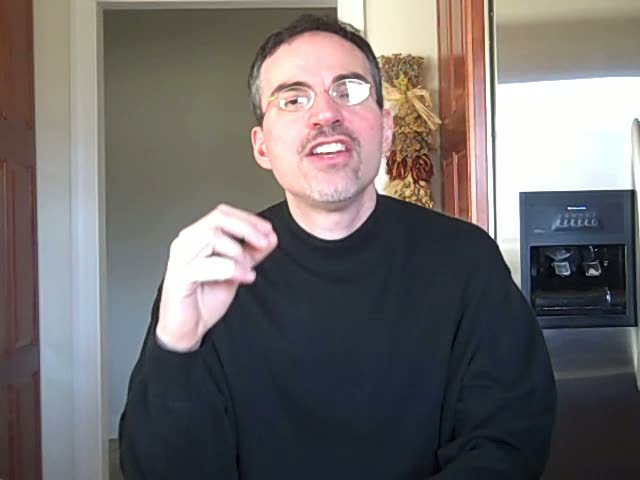A few years ago, Matt Madden wrote and illustrated a book of cartoons called, “99 Ways to Tell a Story.” In it, he tells a single story 99 times – in 99 different ways.
The single story is itself uneventful. A man, working on his laptop, gets up and heads towards the kitchen. A voice at the top of the stairs calls out, “What time is it?” The man glances at his wristwatch and says “It’s 1:15.” He opens the refrigerator and scowls, because he’s forgotten what he was looking for. End of story.
Madden first tells it as a monologue. He then tells it from the man’s point of view. He also tells it as a how-to, a flashback, a comedy, a calligram, a public service announcement, a political cartoon, in silhouette, in close-ups, from the refrigerator’s point of view, as if it were overheard in a bar, and as a homage to Marvel illustrator Jack Kirby, among other inventive ways.
Any story can be told from dozens of angles, in countless styles. Each angle and style reveals something previously hidden. It’s an important principle to remember, and doesn’t only apply to cartoons or even fiction. The idea of differing angles and styles is something to think about for your business communications.
Two weeks ago, Kristen Frantz from Berrett-Koehler Publishers asked me to make a video about the forthcoming edition of my book, “Accidental Genius.” The reason: Berrett-Koehler uses a prominent outside sales rep group, Ingram Publisher Services, to sell its books to bookstores, and Kristen thought it would be good if at sales conference the group saw how committed to selling the book I am.
I never before made a video. The result was too long, even though I had left out some important information. I’d have to reshoot it. The thing puzzling me, though, was this:
How could I make a shorter video while giving my audience more information?
Kristen and I came up with a simple strategy. I divided all my information into talking points. Some of those talking points seemed like they should come from my mouth: the book’s main idea, the philosophy behind it, the story of my eighteen years as a bookseller and my understanding of what a crucial job the sales rep has in the selling of a book. Those I filmed, and are in the video below.
Other points, like who’s in my network and how I plan on supporting the book, were important, but didn’t seem like they needed to come directly from me. Kristen, we decided, would talk about those points live at the conference.
Our solution wasn’t a complicated one, but it did the trick. We took a video with too much information, and made it more palatable by breaking its points into recorded and live moments. An optical illusion of sorts.
Take a look. Perhaps my video or performance skills aren’t what they should be yet, but the idea is still valid: Don’t think you’re stuck with one or two ways of delivering information to your audience. Try a different angle. Graft together uncommon styles. You may be surprised at the result.
By the way, near the end of the video you’ll hear me say, “I told you I’m a magician,” and then I perform a small trick. Unfortunately, I had edited out an earlier part of the video where I discussed my background as a magician and professional illusion inventor. Kristen told me not to sweat it. She’d add that to her talking points during the live session.

That’s great to hear, Kristen. Thanks for letting me know, and for all your help.
I’m glad too that the reps appreciated how I’d sell the book if I were still on the phones. I know how hard and important their job is, and how they need to communicate a lot about a book in seconds.
The sales conference went great and breaking up the content like this worked well. The reps particularly liked how you talked about how you would sell the book. Thanks again for doing the video.
Kristen